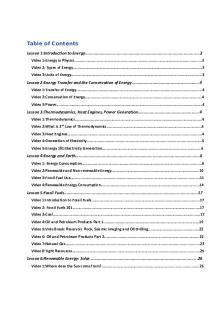Human phys 2601 - Ionoregulation PDF

| Title | Human phys 2601 - Ionoregulation |
|---|---|
| Author | Lalalala Lala |
| Course | Organismal Physiology |
| Institution | The University of Western Ontario |
| Pages | 2 |
| File Size | 92.2 KB |
| File Type | |
| Total Downloads | 56 |
| Total Views | 148 |
Summary
Ionoregulation...
Description
Ionoregulation Humans are able to produce concentrated urine The DCT regulates how concentrated the urine can be (ADH in humans) There is the removal of Na+ in the amphibian nephron, hence frog pees out very diluted urine. They can only make urine as concentrated as their blood (no aquaporins) The anatomy of the mammalian kidney is important in the making of concentrated urine. The cortex is the outer region, medulla inner region The connecting ducts in renal papilla collect urine and empty itself in the ureter, then into the bladder then urinated We have the cortical nephron with bowmans capsule; blood at high pressure is squeezed in there. They play a role in filtering blood but they don’t play a role in urine concentration The medullary nephron is where urine is produced; it has the loop of Henle. Fluid goes down then back up the loop of Henle. After the blood is filtered it goes down the loop then goes up again. The blood that returns into the body has to be at normal osmotic pressure (300mOsm) There is a good relationship between the ability of the kidney to make concentrated urine and medullary thickness Smaller organisms and desert aniamls have bigger rmt Medullaty osmotic gradient Countercurrent multiplication (countercurrent exchange)
low
3 4 2 4 1 8
3 7
1 5
3 0 0 5 0 8 0 0 0
10 0 30 0 60 0 80 0
1 0
hi gh
If AVP is low, the wall of the collecting duct stays impermeable to the movement of
water. The loop sets up the gradient Reptiles can only produce isoosmotic urine (u:p= 1), while birds can make up to u:p=4 Birds have reverse peristalsis; where they pump the urine back up into the rectum The water is reabsorbed then they pee later Mammals only rely on their kidney Connective transport is the bulk flow of fluids; circulatory systems are pressuredriven bulk flow eg O2, CO2, nutrients, waste, heat, pressure Pressure driven work - glomerular filtration in the kidney Capillary not good at holding pressure; tend to bust. They are leaky Mammalian blood cell has a nuclei Cardiac output = stroke volume * heart rate
Plant movement Heliotropism allows the leaf to alter relationship Diaheiotropicleaf actively tracks sunlight at around noon Faces sun horizontally in the morning Paraheliotropism avoids sunlight, faces the sun vertically Diaheliotropism will outcompete other leaves and would be warmer Glacial buttercup; attracts insect for pollination and on the other hand insects in return gets warm and cozy The cells away from the light elongate faster than the cell exposed to the light, hence they tip towards sunlight Thigmonasty does respond to vibrations and movements If you touch a single hair nothing happens,...
Similar Free PDFs

Human phys 2601 - Ionoregulation
- 2 Pages

Human Phys TA Lecture 8 Answers
- 1 Pages

Busi 2601 course outline
- 7 Pages

EED 2601 - Assignment 02
- 8 Pages

Phys lab report 2
- 14 Pages

Phys 1160 Activity 14
- 7 Pages

LAB 3 PHYS 1429
- 3 Pages

Proj motion phys
- 3 Pages

Lecture 3 Phys 2130
- 6 Pages

PHYS 273 FULL Notes
- 97 Pages

Phys 91173 electrcity notes
- 8 Pages

PHYS Lab Report 3
- 7 Pages

PHYS 1011 Chapter 13
- 2 Pages
Popular Institutions
- Tinajero National High School - Annex
- Politeknik Caltex Riau
- Yokohama City University
- SGT University
- University of Al-Qadisiyah
- Divine Word College of Vigan
- Techniek College Rotterdam
- Universidade de Santiago
- Universiti Teknologi MARA Cawangan Johor Kampus Pasir Gudang
- Poltekkes Kemenkes Yogyakarta
- Baguio City National High School
- Colegio san marcos
- preparatoria uno
- Centro de Bachillerato Tecnológico Industrial y de Servicios No. 107
- Dalian Maritime University
- Quang Trung Secondary School
- Colegio Tecnológico en Informática
- Corporación Regional de Educación Superior
- Grupo CEDVA
- Dar Al Uloom University
- Centro de Estudios Preuniversitarios de la Universidad Nacional de Ingeniería
- 上智大学
- Aakash International School, Nuna Majara
- San Felipe Neri Catholic School
- Kang Chiao International School - New Taipei City
- Misamis Occidental National High School
- Institución Educativa Escuela Normal Juan Ladrilleros
- Kolehiyo ng Pantukan
- Batanes State College
- Instituto Continental
- Sekolah Menengah Kejuruan Kesehatan Kaltara (Tarakan)
- Colegio de La Inmaculada Concepcion - Cebu


